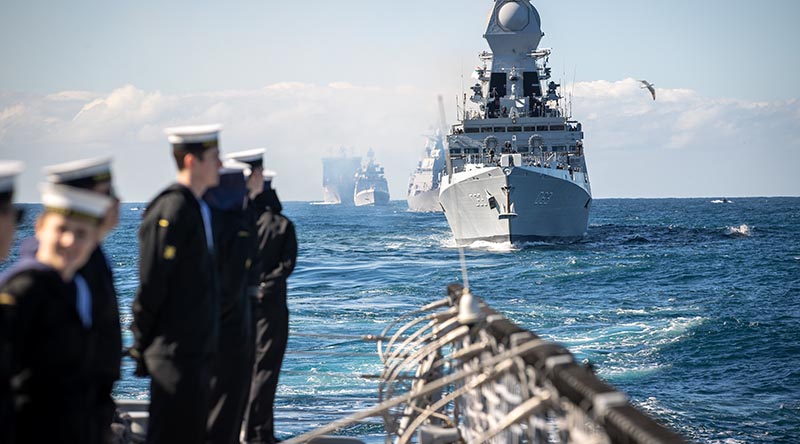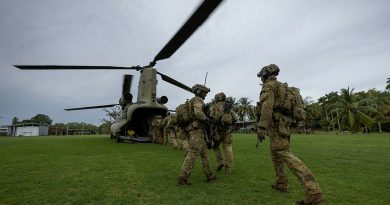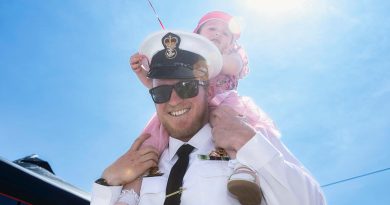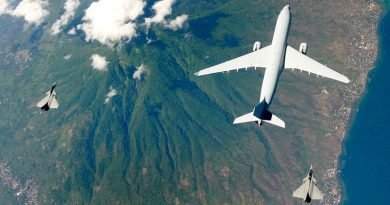HMAS Brisbane leads international fleet into Sydney
Share the post "HMAS Brisbane leads international fleet into Sydney"

Air defence and anti-submarine warfare are some drills planned for the 27th iteration of Exercise Malabar, hosted by Australia for the first time.
CAPTION: HMAS Brisbane’s ship’s company observe the Sydney Harbour fleet entry for Exercise Malabar 2023. Photo by Leading Seaman Matthew Lyall..
Warships from India, Japan and the United States have joined HMAS Brisbane and HMAS Choules for the east coast exercise from August 11-21.
Aviation, communications and replenishment at sea between ships are also planned – with Navy MH60R helicopters, RAAF F-35A Lightning II, Hawk 127 and P-8A Poseidon aircraft in support.
Brisbane led the fleet entry into Sydney Harbour for the exercise and Commanding Officer Commander Kingsley Scarce was looking forward to highlighting the capability of his crew and the Hobart-class destroyer.
“It’s my personal responsibility to maximise the combat capability of this ship and I use exercises like Malabar to make sure we are ready to do whatever the government needs us to,” Commander Scarce said.
The exercise also includes ships’ gun crews practising engagement of surface targets, using various weapons.
One of Brisbane’s 5-inch gun crew is Able Seaman Jedd Bushell, who said it was important to regularly fire to maintain skills.
“It’s always been fascinating seeing other nation’s navies and how they like to do things, we always learn a lot,” Able Seaman Bushell said.
“It’s all about working together with our allied partners and performing serials to see how well we work together as a team.”
The exercise will begin with a harbour phase, including cultural exchanges and an Australia versus India cricket match.
Things will then transition to a sea phase, with practice for boarding operations.
“We might speak English, but we might not speak the same English and it’s very important we understand the human side of being interoperable with each other,” Commander Scarce said.
The exercise aims to build relationships to help the militaries get comfortable working with each other and ensure systems are interoperable.
“We’ll really test each other out and make sure we know exactly how we each work and how to work together more effectively,” Commander Scarce said.
.
.

.
.
Share the post "HMAS Brisbane leads international fleet into Sydney"





